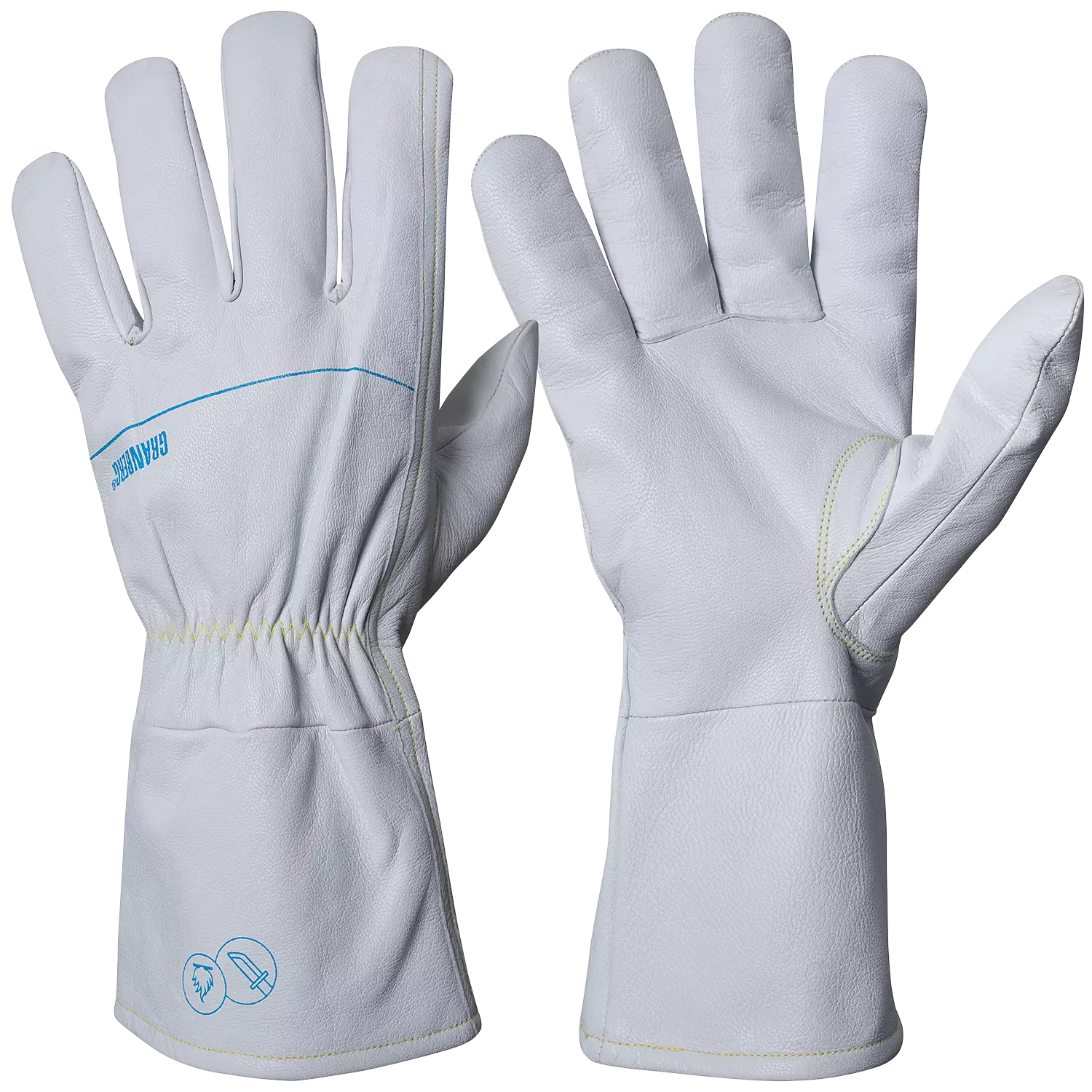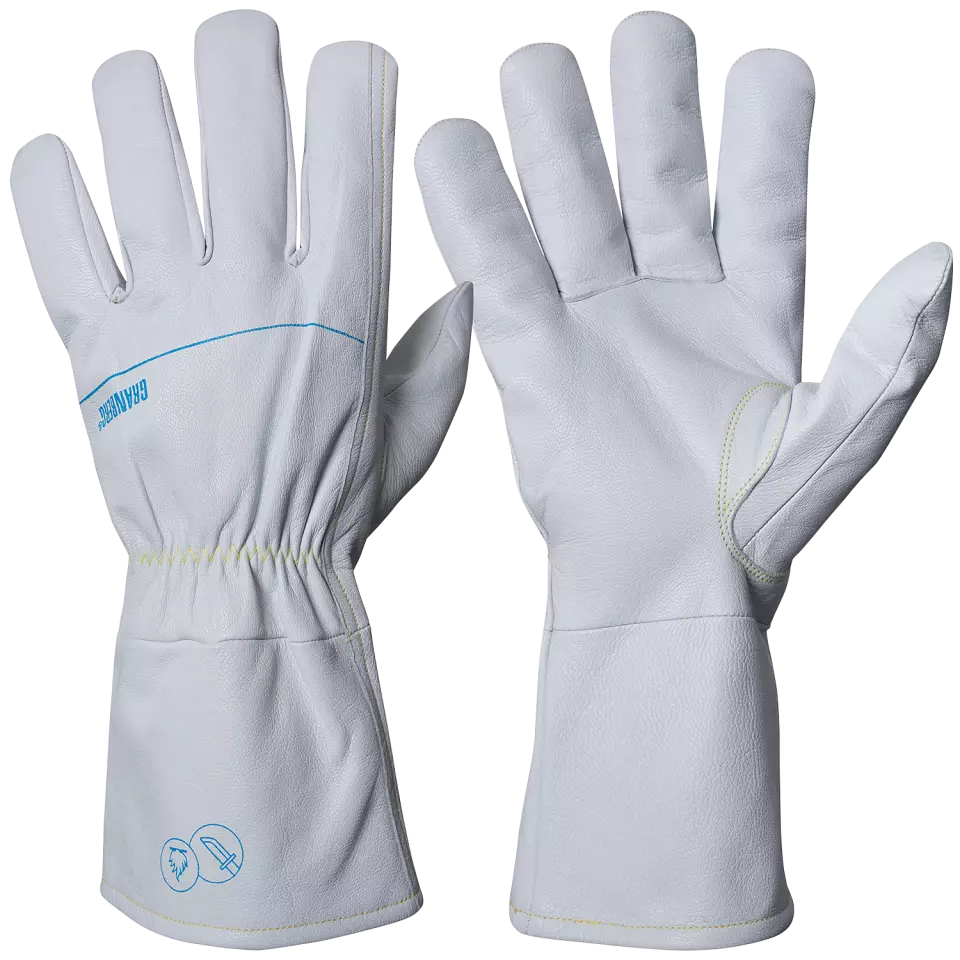
Features You'll Love

Cuff Style · Open
Enjoy quick and easy on/off with an open cuff, providing a comfortable, non-restrictive fit for all-day wear.

EN 388 · Cut Resistance, ISO 13997 Level C, Tear Resistance Level 2, Puncture Resistance Level 2, Abrasion Resistance Level 3
EN 407 · Heat Contact Level 1, Burning Behaviour Level 4, Radiant Heat Level 1, Heat Convection Level 1, Metal Splash Resistance Level X, Molten Metal Resistance Level X
Offers medium protection against cut risks from handling lightweight metals and plastics.
Offers moderate resistance against snagging or catching on rough objects, preventing small rips from growing.
Withstands moderate force from sharp objects like heavy-duty splinters or wires.
Provides good resistance against scraping, scratching, and rubbing on rough or abrasive surfaces.
Provides protection when briefly touching hot objects. Certified for contact with surfaces up to 100°C for at least 15 seconds, offering short-term protection against burns from items like hot cookware or machinery parts.
Provides the highest level of protection against catching fire when exposed to a naked flame. After the flame is removed, the material will stop burning within 2 seconds and stop glowing within 5 seconds.
Provides Level 1 protection against radiant heat, delaying the transfer of heat from a nearby source for a short time. Ideal for tasks where hands are exposed to heat from a distance, not for direct contact with hot items.
Provides basic, short-term protection against heat transferred from an open flame. This glove delays heat penetration for a few seconds when briefly exposed to fire, suitable for situations with a low risk of encountering flames.
This product has not been tested for resistance against splashes of molten metal under the EN 407 standard. It does not offer rated protection for tasks where this is a risk, such as welding.
This product has not been tested for resistance against splashes of molten metal. It provides no claimed protection and should not be used for welding, foundry work, or other tasks with molten metal risks.
Granberg
Cut and Heat Resistant Gloves, White, 6 pairs
Cut and Heat Resistant Gloves, White, 6 pairs
5 / 5
102,13 €
Price per 6 pairs
17,02 € / pair
Choose size
Free delivery
Features You'll Love

Cuff Style · Open
Enjoy quick and easy on/off with an open cuff, providing a comfortable, non-restrictive fit for all-day wear.

EN 388 · Cut Resistance, ISO 13997 Level C, Tear Resistance Level 2, Puncture Resistance Level 2, Abrasion Resistance Level 3
EN 407 · Heat Contact Level 1, Burning Behaviour Level 4, Radiant Heat Level 1, Heat Convection Level 1, Metal Splash Resistance Level X, Molten Metal Resistance Level X
Offers medium protection against cut risks from handling lightweight metals and plastics.
Offers moderate resistance against snagging or catching on rough objects, preventing small rips from growing.
Withstands moderate force from sharp objects like heavy-duty splinters or wires.
Provides good resistance against scraping, scratching, and rubbing on rough or abrasive surfaces.
Provides protection when briefly touching hot objects. Certified for contact with surfaces up to 100°C for at least 15 seconds, offering short-term protection against burns from items like hot cookware or machinery parts.
Provides the highest level of protection against catching fire when exposed to a naked flame. After the flame is removed, the material will stop burning within 2 seconds and stop glowing within 5 seconds.
Provides Level 1 protection against radiant heat, delaying the transfer of heat from a nearby source for a short time. Ideal for tasks where hands are exposed to heat from a distance, not for direct contact with hot items.
Provides basic, short-term protection against heat transferred from an open flame. This glove delays heat penetration for a few seconds when briefly exposed to fire, suitable for situations with a low risk of encountering flames.
This product has not been tested for resistance against splashes of molten metal under the EN 407 standard. It does not offer rated protection for tasks where this is a risk, such as welding.
This product has not been tested for resistance against splashes of molten metal. It provides no claimed protection and should not be used for welding, foundry work, or other tasks with molten metal risks.
Product description
These premium protective gloves combine soft yet durable goatskin leather with comprehensive Kevlar® lining to deliver superior protection against heat, cuts, and arc flash hazards. Engineered with a prolonged cuff design and Kevlar® thread construction, they provide exceptional protection while maintaining excellent dexterity and touch sensitivity. The gloves meet rigorous safety standards including CE Category III certification and offer an impressive Arc Thermal Performance Value (ATPV) of 34 cal/cm².
Product Features:
- Soft and strong goatskin leather construction
- Full Kevlar® lining for enhanced protection
- Prolonged cuff design
- Sewn with Kevlar® threads
- Very comfortable and fitted design
Technical Details:
- Arc flash approved to level 3 (ATPV: 34 cal/cm²)
- Resistant to contact heat up to 100°C for 15s
- Protection levels:
—Abrasion resistance: Level 3
—Tear resistance: Level 2
—Puncture resistance: Level 2
—Cut resistance: Level C
—Limited flame spread: Level 4
Recommended Applications:
- Construction
- Automotive manufacturing
- Oil and gas
- Assembly
Standards:
- CE Category III certified
- CE Notified body number: 2777
- EN ISO 21420:2020 compliant
- UKCA approved